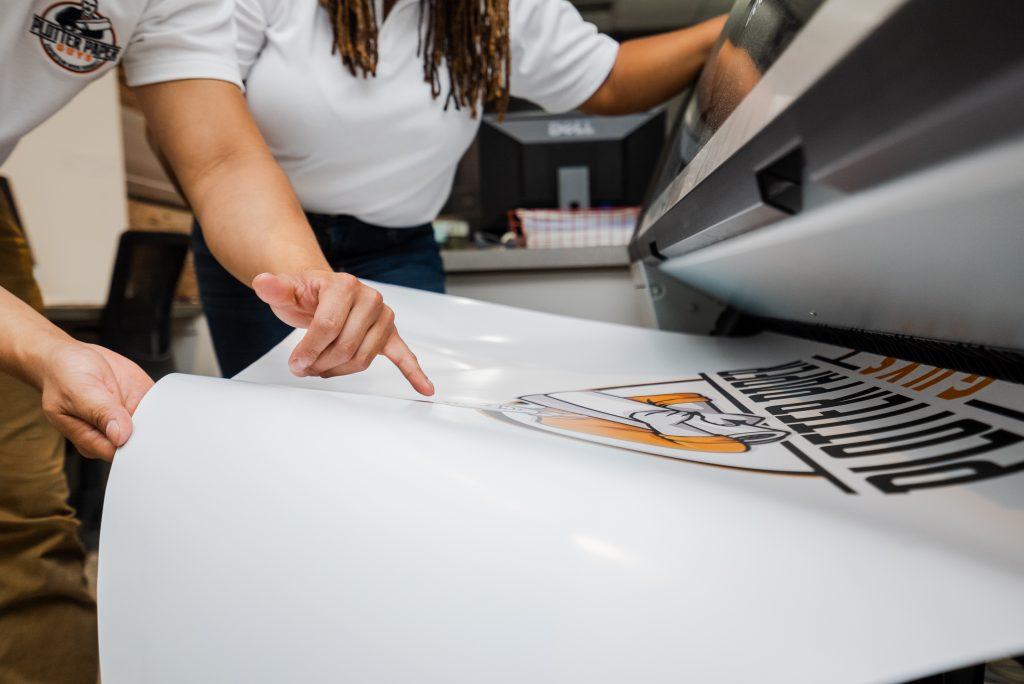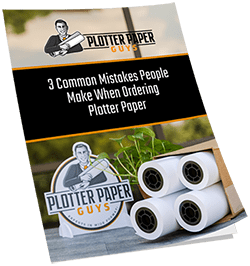Posters are one of the most commonly used types of print media out there. They’re so popular as marketing materials because they’re affordable, eye-catching, and versatile in their use. We’ve all seen movie posters before, and there’s a reason that studios and distributors will start releasing character posters and other print materials long before releasing film trailers. Movie theaters and storefronts prominently display these posters for months and even years at a time, providing memorable art for potential customers to see, appreciate, and generate buzz for the movie’s release.
It’s one thing to design a poster digitally for online distribution, but what is the best way to get them out there in the physical realm? There’s a lot of prep work that goes into poster paper printing. First, you have to have the right printer and decide on the paper size and finish, depending on where the poster is going up and for how long. If you’re new to printing posters and physical marketing materials, all the information and decisions can be overwhelming, but we can help! Below is everything you need to know about poster printing and how to get the highest quality product for your project.
Printed Poster Uses
Posters are useful in a variety of different industries. The most popular use is for promotional purposes, but you can also see universities utilizing them for decoration and to show school pride. They can be for indoor events, as well as outdoor events. The type of poster paper to use will depend on their application and placement.
Marketing
Posters are one of the original marketing methods for businesses to advertise and sell their products. Practically ever since shops opened up, shopkeepers have been displaying banners, posters, and art outside their front door to attract and lure in customers. Business owners can use them to share their company’s newest items, inform customers about upcoming events, and provide contact information. Nowadays, posters are one of the most passive ways to generate attention. Instead of bombarding potential customers with advertisements on social media, posters allow customers to discover the ad on their own terms. These posters are most often placed indoors for varying lengths of time. Posters advertising short sales don’t need to last as long as those you use to market your entire business. You may also end up using smaller posters if they’re going inside your storefront.
Trade Shows
Another common place to find many posters and other physical marketing materials is at trade shows and conventions. Vendors and booths need their signage to stand out and provide important information for the many attendees who pass by. Trade show posters must also be durable, portable, and easily replaceable. You also want them to stand out from the crowd. A laminated matte poster would serve well, especially if some of these trade shows happen outdoors. Matte posters are more affordable than glossy ones, so you can always buy a new one. Laminating them provides extra protection, and it also allows for a more vibrant image.
Affordable Wall Art
Posters make for a great decoration in any home. So many of us had posters taped to the walls of our childhood bedrooms or dorm rooms, and it’s because they’re affordable, easy, and can last for years indoors. You can display your favorite art prints or family photos without breaking the bank. Store-bought posters are often made in bulk using lower quality inks. The paper may be smooth and glossy, but it’s also thin and cheap. However, a printing service can help you make a much higher-quality poster. Opt for a matte or satin finish and place the poster inside a frame to preserve it. You could also make personalized posters with collages or calendars.
Standard Sizes
You know exactly what you’re going to use your poster for and what’s going on it, but what size poster paper should you print on, and how does that affect the overall quality?
First of all, there are four common poster sizes in the United States. They are 11″ x 17″, 18″ x 24″, 24″ x 36″, and 32″ x 40″. All of them follow the same standard rectangular shape, displaying vertically or horizontally. You can also print posters larger than those options and that are square rather than rectangular. However, you’ll have to make sure your digital design matches up.
The International Standards Organization developed ISO 216, the international standard used in most countries, for finished print sheet sizes:
Standard Architectural sheet sizes:
- 9” x 12” – ARCH A
- 12″ x 18″ – ARCH B
- 18″ x 24″ – ARCH C
- 24″ x 36″ – ARCH D
- 30″ x 42″ – ARCH E1
- 36″ x 48″ – ARCH E
Standard Engineering sheet sizes:
- 8.5” x 11” – ANSI A
- 11″ x 17″ – ANSI B
- 17” x 22” – ANSI C
- 22″ x 34″ – ANSI D
- 34″ x 44″ – ANSI E
Digital Design
In modern times, pretty much all creators design their poster art on a computer. Even if it starts out as a sketch, the designer must eventually scan and format the art to the size of the poster. There are a few considerations to remember in the poster paper printing process when it comes to digital design.
First, what file type are you using, and is it high quality? A large format poster needs to be of the highest quality if you don’t want it to look pixelated or blurry. No matter the quality of the paper and service, if the file lacks definition, it will still come out blurry. You can’t expect a printing service to magically correct your mistakes.
It’s best to always design using the Cyan, Magenta, Yellow, and Key (CMYK) color wheel to get a more accurate color representation. If you are working in Red, Green, and Blue (RGB), you can always convert your work when you’re done to correct the color for a more high-quality picture.
A vector-based program like Adobe Illustrator can help reduce your file size and get a crisper print result. Remember to set your print job to 300 DPI to get the best image resolution. Also supply your print files as PDFs or high-resolution JPGs.
Indoor or Outdoor?
Where you’re placing a poster should determine the type of materials and finish you print on. If you’re placing the poster outside, you’ll need tougher material that can survive the weather conditions. Even if it’s under cover and out of the rain, it still must deal with humidity, wind, and potential sun damage. Lamination is also an effective method for preserving the quality of an outdoor poster.
Conversely, indoor placements have the luxury of a controlled, air-conditioned environment. They won’t need to be nearly as heavy-duty as an outdoor poster, and you could even get away without laminating it. In turn, they’re also much more affordable.
Short-Term Indoor Applications
Some examples of short-term indoor applications include marketing something temporary like a movie or a store sale. In many cases, you’ll end up placing these short-term posters on the walls inside of your establishment, as opposed to outside. As such, they won’t need additional protection, like lamination, which can help save money.
Additionally, you can opt for thinner paper material since you won’t need it to last as long. The 28 lb premium large format printer paper provides full-color printing with a smooth printing surface. Alternatively, the 36 lb and 46 lb Heavy Weight Bond Paper has better image quality and provides higher ink saturation.
Long-Term Indoor Applications
A long-term indoor application refers to a poster that you will use for months, if not years at a time. This can include a poster for a recurring event, one you take and re-use at multiple different trade shows, or decorative applications. They have many of the same benefits as a short-term indoor application in that they won’t need extra protection from the weather or sunlight. However, you’ll want sturdier paper material if you want it to last longer.
A 28 lb. printer paper will suffice for certain long-term indoor applications. However, we suggest that you invest in the higher-quality and more durable 36 lb or 46 lb options. They both provide high-quality images with a stronger surface, but the greater strength and durability of the 36 and 46 lb. options are worth the higher investment.
On top of a higher paper weight, you can mount your posters on foam board. This is done using adhesive spray or adhesive sheets, though some come with self-adhesive coatings. A foam board provides a sturdy backing to keep them from warping or moving in their frame, which can help when they’re hung up for longer periods of time.
Poster Paper Printing for Outdoor Use
Posters printed for outdoor use need to be much more durable and resistant than those for indoor applications. They have to deal with windy and rainy weather conditions as well as continuous exposure to sunlight. As such, you should opt for sturdier paper material with some kind of protective finish.
We recommend full encapsulation, such as laminating, for any outdoor posters. You can also use polypropylene without lamination, vinyl banners, or some other water-resistant materials. A vinyl banner can function much like a poster but isn’t made from paper materials. As such, you can expect it to prove much more durable and to last longer.
Printing a poster with a protective coating will help it last longer, but you may also get a reflective product. Whether or not that is a good or bad thing depends on your personal preference.
Why Laminate Poster Paper?
A key consideration when printing a poster is whether it’s worth laminating the paper. Lamination refers to the process in which you enclose and seal a piece of printer paper between two separate sheets of plastic film. These two plastic sheets are pressure sensitive or pressed together with heat, protecting the enclosed paper from water and physical damage.
You’ll most often see the lamination process used for papers that need to last long, such as identification, documents, or signs. Laminating posters also makes them last longer and increases their durability. Fingerprints, oils, and moisture can’t penetrate the plastic and wash right off. In some cases, laminated paper has more color pop. A matte poster with gloss laminate is more affordable than printing directly onto photo gloss.
Another benefit of lamination is the distinct look it provides. Glossy images help your poster stand out, as they give off a more professional appearance. If your laminated cover does somehow end up damaged, you can always remove it and re-laminate the poster to use it again.
Finishes
Generally speaking, poster finishes refer to the application of color, finish of the media roll, or lamination to a poster. When it comes to poster paper printing, you have options like matte heavy weight, matte super heavy weight, pearl, semi-gloss, gloss, and satin. Consider whether your project would benefit more from matte vs. glossy photos and art.
A matte finish is the most affordable option and comes with zero glossiness. This is most commonly used for brochures and flyers. However, you can use posters with a matte finish in a few different scenarios. If your poster isn’t meant to last long or is meant for a less expensive decorative piece, then you can get away with a matte finish. You’ll need to either laminate a poster with a matte finish or frame it if you want it to last longer. Sleeves and hangers allow you to conveniently protect and hang a poster. You can also purchase pre-made frames that are made for specific sizes.
A satin finish lies in between matte and glossy paper. It has a soft sheen to it without being too shiny. As such, it’s often referred to as semi-gloss.
The pearl finish provides vibrant color with a much lower shininess than the other glossy options. This option is usually chosen by professional photographers due to its classy appearance.
Checking Your Spec Sheet
Remember to check the spec sheet for your printer when choosing the correct type, thickness, and paper size. Not all plotters or wide-format printers can print on all types and sizes of media. If there is any confusion, you should reach out to The Guys to learn more about what they offer and what will work for your printer.
Poster Paper Printing Made Simple
Choosing the right poster paper isn’t the easiest decision, especially if this is your first time placing an order or printing something different than what you normally do. Different wide-format printers/plotters have different capabilities, and understanding all the subtle distinctions can be a challenge. Luckily, we’re here to help!
At Plotter Paper Guys, our goal is to make every step of the process as easy as possible for our customers. We offer paper in categories for Inkjet CAD Media, Engineering Media, Display Graphics, and more. Contact us to help you choose. We can answer your questions about paper quality, printing times, and more.




